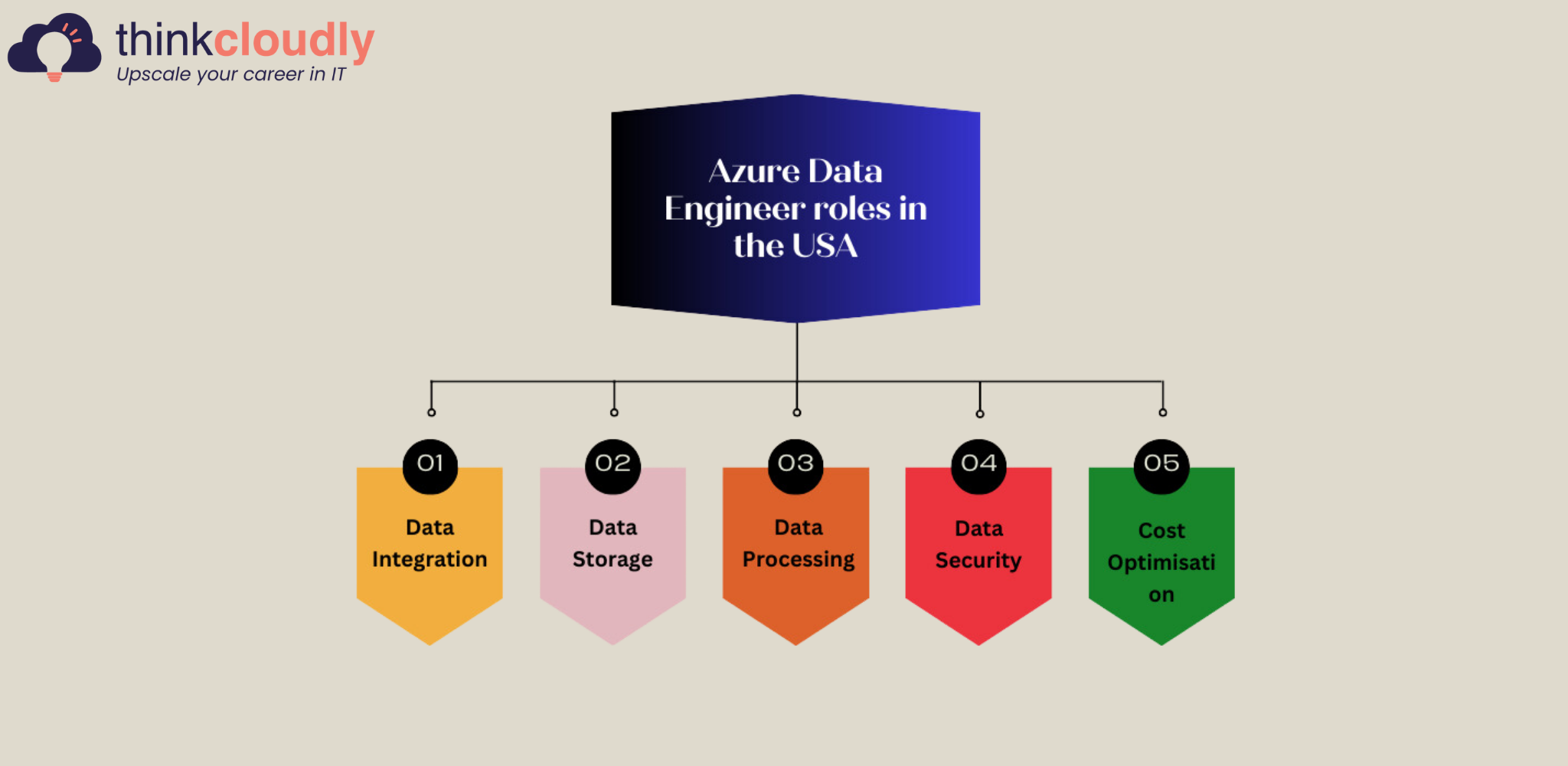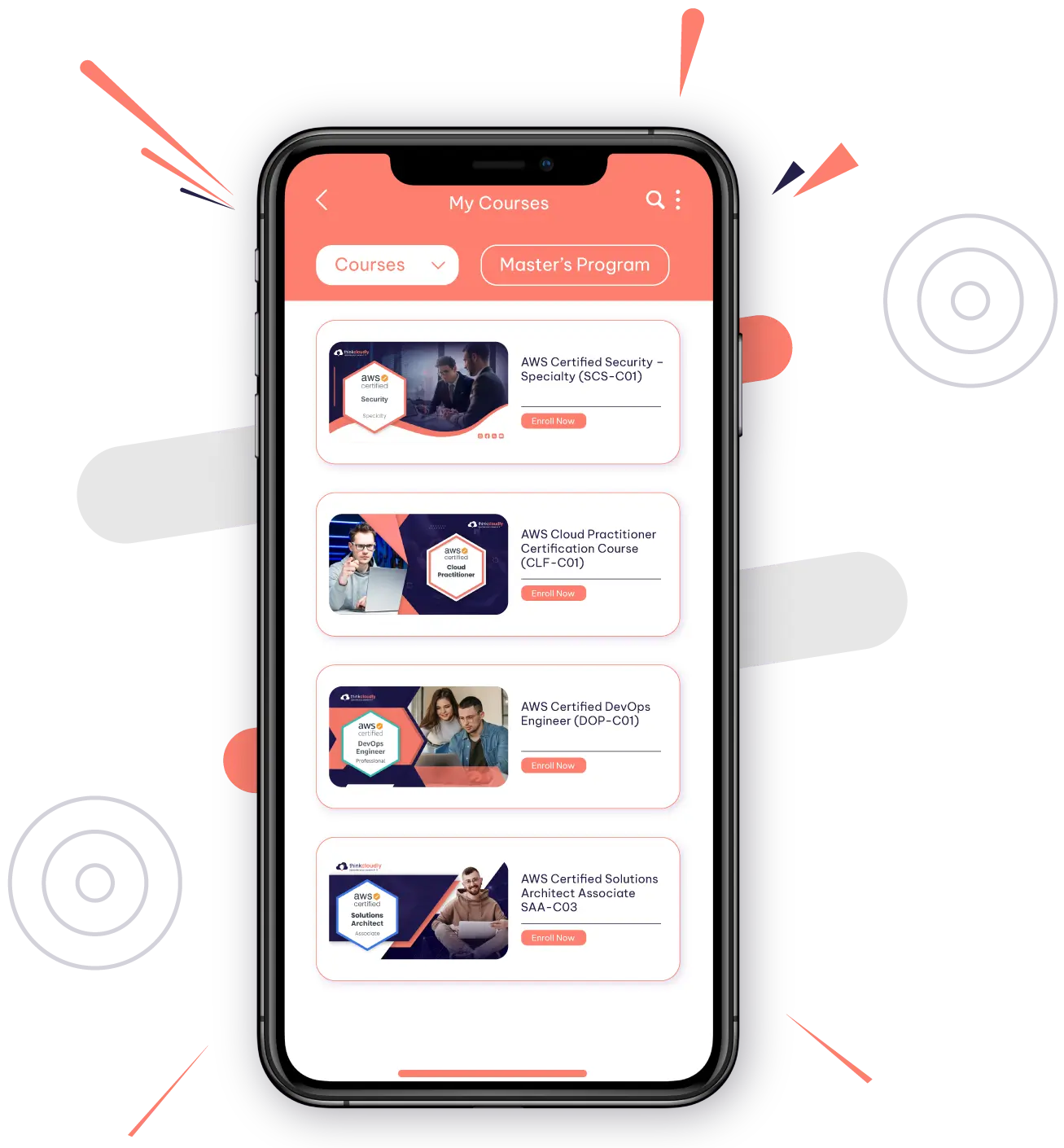Introduction
In the ever-evolving realm of cloud computing, Azure stands as an eminent layer, which offers a robust platform for organisations to build, deploy, and manage applications. As the demand for data-driven insights continues to surge, Azure data engineering roles have become increasingly vital. This blog serves as a comprehensive guide for those aspiring to secure Azure Data Engineer jobs in the USA. From understanding the job landscape and essential interview questions to gaining hands-on experience through projects, exploring certification paths, and optimising costs, this guide provides a roadmap for individuals looking to carve a successful career in Azure data engineering.
Understanding the Azure Data Engineer Job Landscape:
Azure Data Engineer roles in the USA encompass a range of responsibilities, which includes:

1. Data Integration: Designing and implementing data integration solutions using Azure services like Azure Data Factory.
2. Data Storage: Managing and optimising data storage solutions using Azure Storage services.
3. Data Processing: Developing and deploying data processing solutions, often leveraging Azure Databricks or Azure HDInsight.
4. Data Security: Ensuring the security and compliance of data solutions, incorporating Azure Directory (Azure AD) and encryption mechanisms.
5. Cost Optimisation: Optimising costs associated with data storage, processing, and transfer to ensure efficiency.
Essential Interview Questions for Azure Data Engineer Jobs:
- What is Azure Data Factory, and how is it used in data engineering workflows?
- Explain the key components of Azure Blob Storage and their use cases in data engineering.
- How can you ensure data security in Azure, particularly when dealing with sensitive information ?
- Discuss the role of Azure Databricks in the context of data engineering projects.
- What are the common challenges in data integration, and how can Azure services address them?
- Describe the process of optimising costs in Azure data engineering projects.
- How does Azure HDInsight facilitate big data processing, and when is it an appropriate choice?
- What is Azure Synapse Analytics, and how does it contribute to data warehousing?
- Explain the significance of Azure Active Directory in ensuring secure data access.
- Discuss your experience with Azure networking and its relevance to data engineering projects.
Gaining Hands-on experience through Azure Projects for Beginners:
1. Data Integration Project with Azure Data Factory:
Create a data pipeline using Azure Data Factory to integrate data from multiple sources.
2. Azure Storage Management:
Build a project focused on optimising Azure Blob Storage for efficient data storage and retrieval.
3. Data Processing Project with Azure Databricks:
Implement a data processing solution using Azure Databricks to analyse large data sets.
4. Secure Data Handling Project with Azure Active Directory:
Develop a project that ensures secure data access using Azure Active Directory authentication.
5. Cost Optimisation Project:
Optimise costs associated with data storage, processing, and networking in an Azure environment.
Exploring the Azure Certification Path:
1. Microsoft Certified: Azure Fundamentals (AZ-900):
Foundational certification providing a broad understanding of Azure services.
2. Microsoft Certified: Azure Data Fundamentals (DP-900):
Focuses on foundational knowledge of core data concepts and Azure data services.
3. Microsoft Certified: Azure Data Engineer Associate (DP-203):
Validates skills in designing and implementing data solutions using Azure services.
4. Microsoft Certified: Azure Solutions Architect Expert (AZ-303 and AZ-304):
Suitable for those aspiring to move into architect roles with a broader understanding of Azure services.
Azure Cost Optimisation Strategies:
1. Resource Tagging:
Implement resource tagging to categorise and track costs for better financial management.
2. Azure Cost Management and Billing:
Utilise Azure Cost Management and Billing tools to monitor, analyse, and optimise costs.
3. Reserved Instances:
Take advantage of Azure Reserved Instances for discounted pricing on virtual machines.
4. Right-Sizing Resources:
Analyse resource usage and adjust sizes to match workload requirements, optimising costs.
5. Automation of Resource Scaling:
Implement automation to dynamically scale resources based on demand, avoiding unnecessary costs.
Conclusion
Securing Azure Data Engineer jobs in the USA requires a multifaceted approach, from mastering key concepts and answering interview questions to gaining hands-on experience through projects.The Azure certification path offers a structured way to validate your expertise, while cost optimisation strategies ensure efficient resource utilisation. By navigating this comprehensive guide aspiring Azure data engineers can equip themselves with the skills, knowledge, and practical experience needed to thrive in a dynamic and competitive job landscape. As organisations continue to leverage Azure for their data engineering needs, a well-prepared professional stands poised to make significant contributions to the ever-evolving world of cloud computing.












No comment yet, add your voice below!